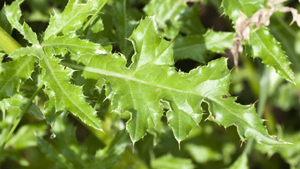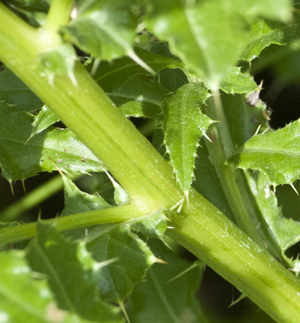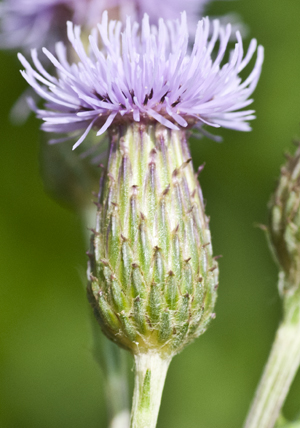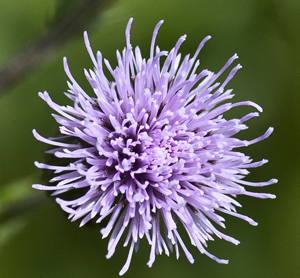Creeping thistle
Leaves and stem

The leaves are lobed and have small spines on the margin. The edges are also 'wavy' and toothed. The leaves can vary in length between 8 and 20 cm. The thistle can vary considerably in size.

The leaves run down to the spineless stems - which lack 'wings' (cf. spear thistle).
Flowers and Fruits

The flowers are pale purple / lilac in colour with a slight fragrance. The bracts beneath the flowers are purplish green in colour and scarcely spiny (compared to the spear thistle).

The seeds are achenes attached to feathery hairs (the pappus); sometimes referred to as plume thistles because of this arrangement.
Ecology and other notes
One of the most common thistles is Cirsium arvense. It is a perennial (with a creeping, rhizomatous rootstock) and can reach a height of a metre or more. The plant produces seeds with a 'plume' of feathery hairs - which aid wind dispersal. It is found throughout the U.K with the exception of highland areas.
It is found in grassy and waste places. It is regarded as a pernicious weed as defined by the "Weeds Act of 1959"